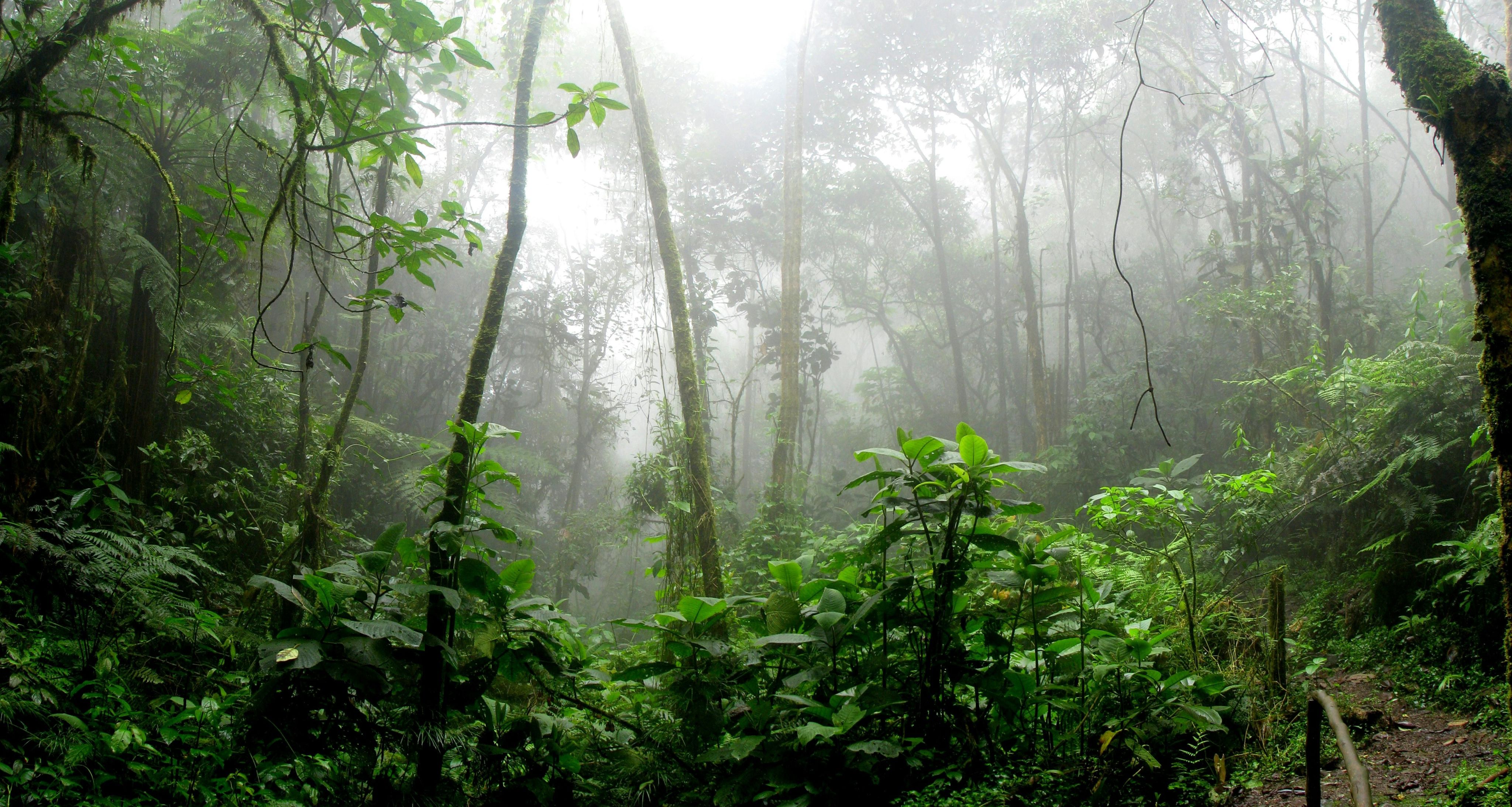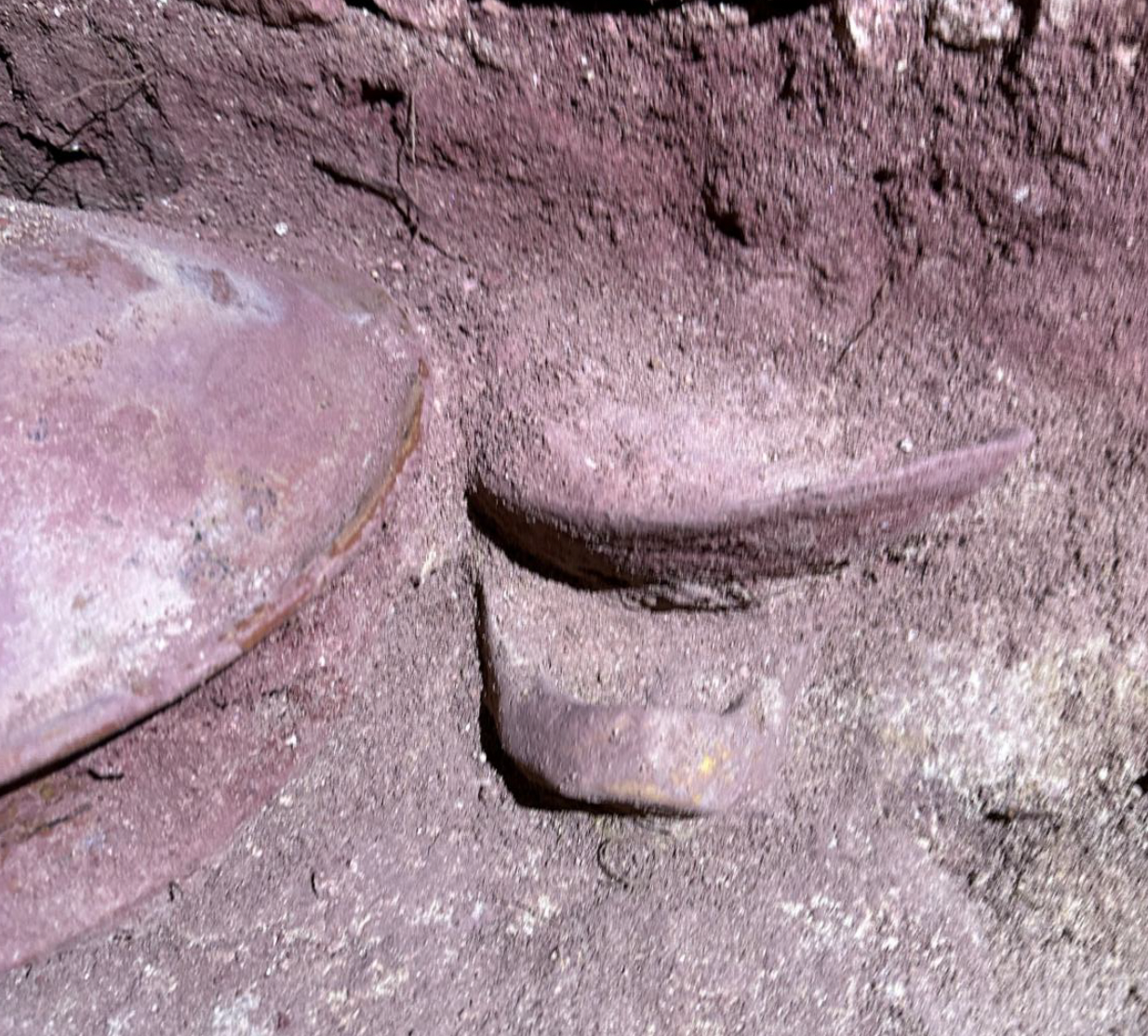The Chase(s) of a Lifetime
After 40 Years, UH Archaeologists Arlen and Diane Chase Uncover a Ruler’s Tomb in Caracol and — Once Again — Rewrite Maya History
Story by Laurie Fickman | Design by Marcus Allen
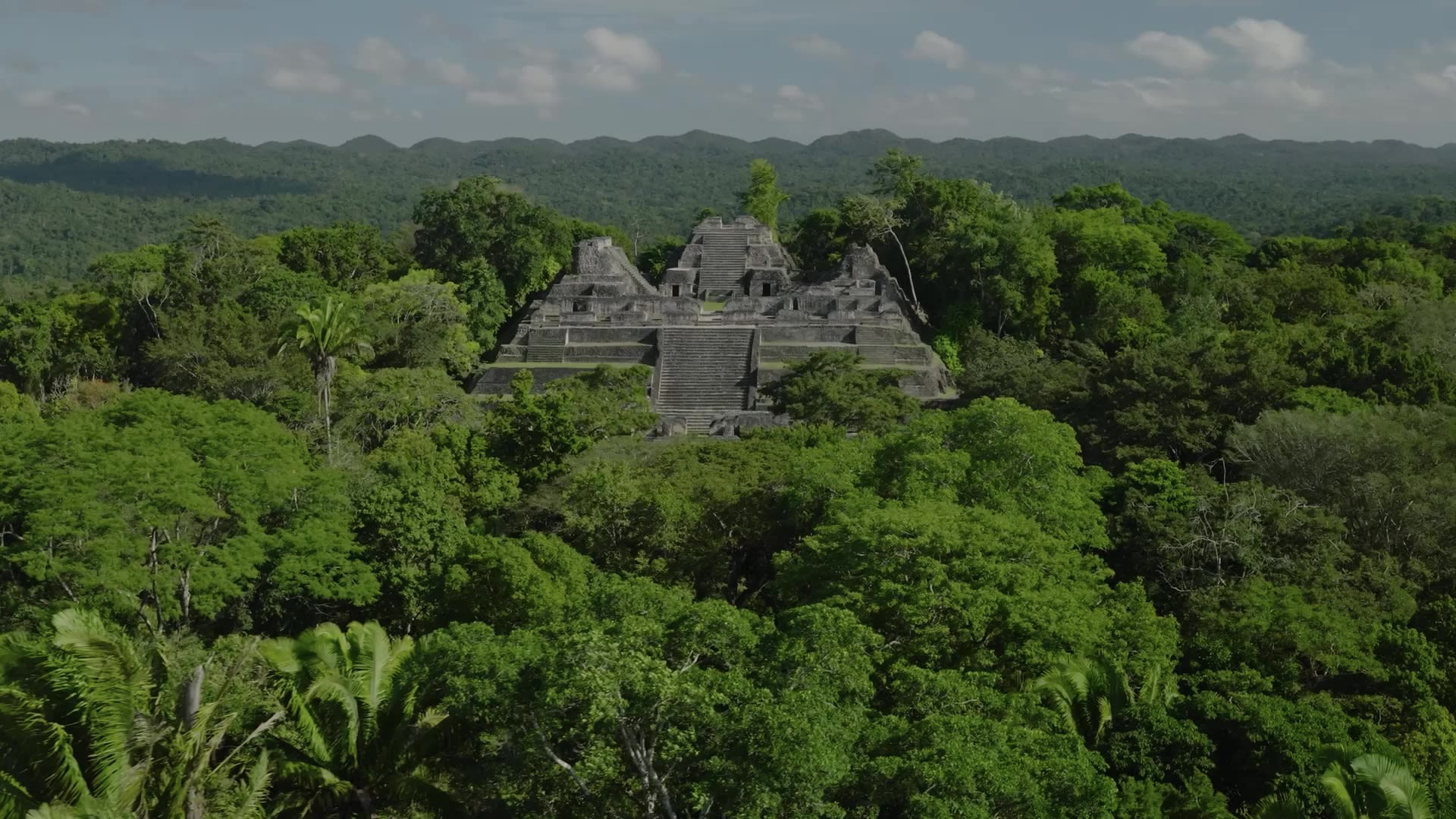
In 1937, woodcutter Rosa Mai, likely with a machete in hand, slashed his way through the thick jungle forest that covered the Vaca Plateau in Caracol, Belize, cutting vegetation and underbrush in search of mahogany and tree sap, known as chicle, that was used to make chewing gum.
While history makes no note of Mai’s success in the tree and gum business on the northeastern coast of Central America, it does record — with great importance — that he found carved stones and enormous mounds, cloaked in thick vegetation and years of overgrowth, that he suspected to be hiding archaeological secrets.
It would take about 50 more years for young archaeologists Diane and Arlen Chase to begin major excavation at the site, using hand tools to manually clear and carefully remove layer after layer of soil and debris. Finally, the structures beneath the mounds began to spill their secrets. One revealed itself to be the most impressive structure at Caracol — a royal palace, ceremonial center and seat of power, originally built between 600-700 AD, in the Late Classic period of the Maya civilization.
Caana, the central architectural complex at Caracol, Belize, rising 43.5 m above ground level. Founder’s tomb was found under the canopy in an acropolis to the immediate right of Caana.
Caana, the central architectural complex at Caracol, Belize, rising 43.5 m above ground level. Founder’s tomb was found under the canopy in an acropolis to the immediate right of Caana.
Its scale and massive size — soaring 141 feet in the sky — prompted the Chases to name the structure Caana, which means “Sky Place” in the Maya language.
Based on their findings in the palaces and temples found throughout the site, after dating relics and reading hieroglyphs, the Chases proved Caracol to be a major political player in Maya history, dominating the southern part of the Yucatan Peninsula from 560 through 680 AD before its abandonment by 900 AD.
That was new news for other researchers who had dismissed Caracol as a peaceful backwater town.
As remarkable as the Chases revealing Caana, and rewriting the history of the Maya based on their findings, this was only the beginning for them in Caracol.
The story of these married archaeologists could fill several text-and-story books. It is a story of chemistry — theirs — and science, which would lead them to become the world’s leading experts on Caracol and the Maya civilization.
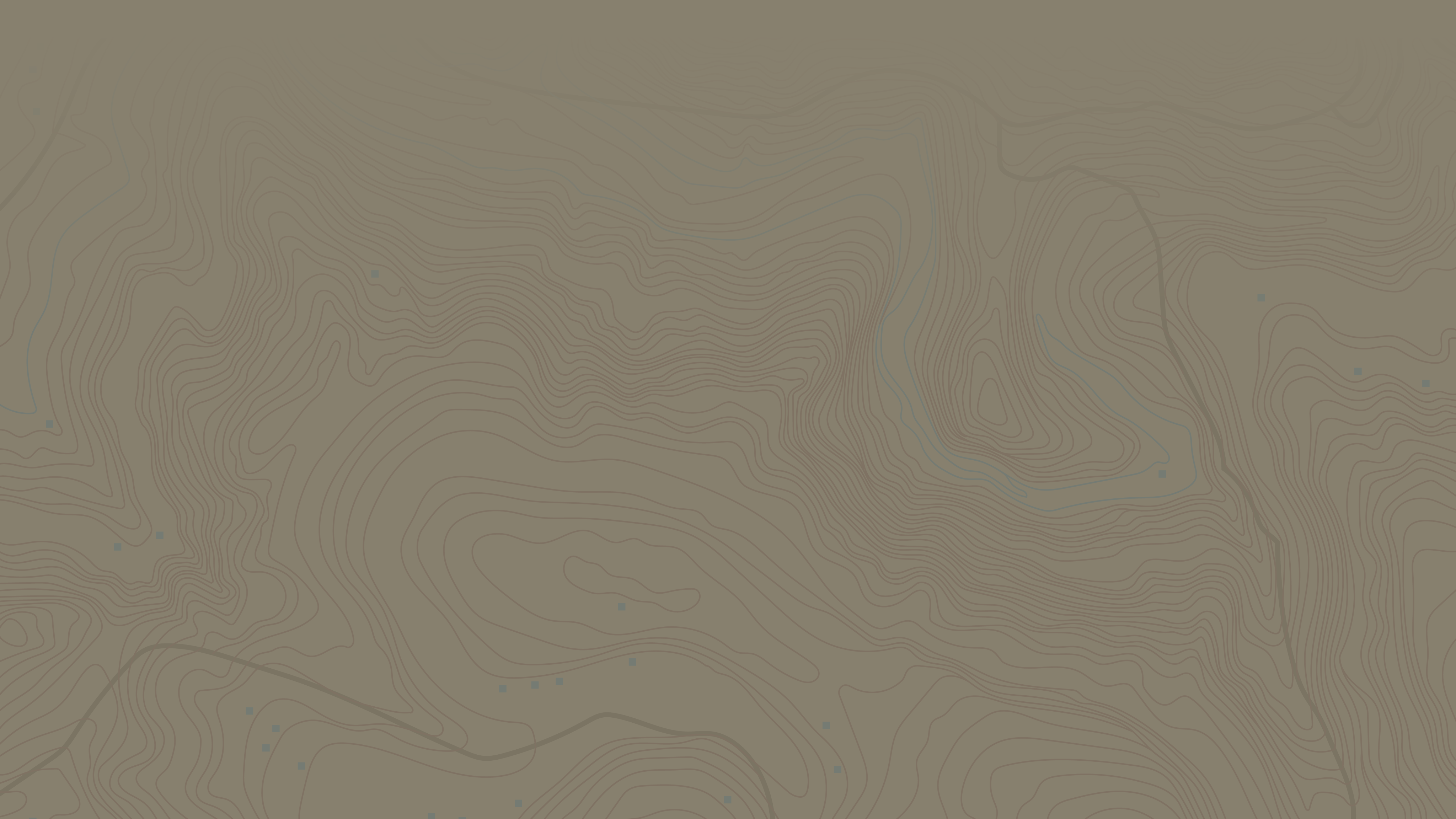
In 1937, woodcutter Rosa Mai, likely with a machete in hand, slashed his way through the thick jungle forest that covered the Vaca Plateau in Caracol, Belize, cutting vegetation and underbrush in search of mahogany and tree sap, known as chicle, that was used to make chewing gum.
While history makes no note of Mai’s success in the tree and gum business on the northeastern coast of Central America, it does record — with great importance — that he found carved stones and enormous mounds, cloaked in thick vegetation and years of overgrowth, that he suspected to be hiding archaeological secrets.
It would take 50 more years for young archaeologists Diane and Arlen Chase to begin major excavation at the site, using hand tools to manually clear and carefully remove layer after layer of soil and debris. Finally, the structures beneath the mounds began to spill their secrets. One revealed itself to be the most impressive structure at Caracol — a royal palace, ceremonial center and seat of power, originally built between 600-700 AD, in the Late Classic period of the Maya civilization.
Caana, the central architectural complex at Caracol, Belize, rising 43.5 m above ground level. Founder’s tomb was found under the canopy in an acropolis to the immediate right of Caana.
Caana, the central architectural complex at Caracol, Belize, rising 43.5 m above ground level. Founder’s tomb was found under the canopy in an acropolis to the immediate right of Caana.
Its scale and massive size — soaring 141 feet in the sky — prompted the Chases to name the structure Caana, which means “Sky Place” in the Maya language.
Based on their findings in the palaces and temples found throughout the site, after dating relics and reading hieroglyphs, the Chases proved Caracol to be a major political player in Maya history, dominating the southern part of the Yucatan Peninsula from 560 through 680 AD before its abandonment by 900 AD.
That was new news for other researchers who had dismissed Caracol as a peaceful backwater town.
As remarkable as the Chases revealing Caana, and rewriting the history of the Maya based on their findings, this was only the beginning for them in Caracol.
The story of these married archaeologists could fill several text-and-story books. It is a story of chemistry — theirs — and science, which would lead them to become the world’s leading experts on Caracol and the Maya civilization.
First, the chemistry
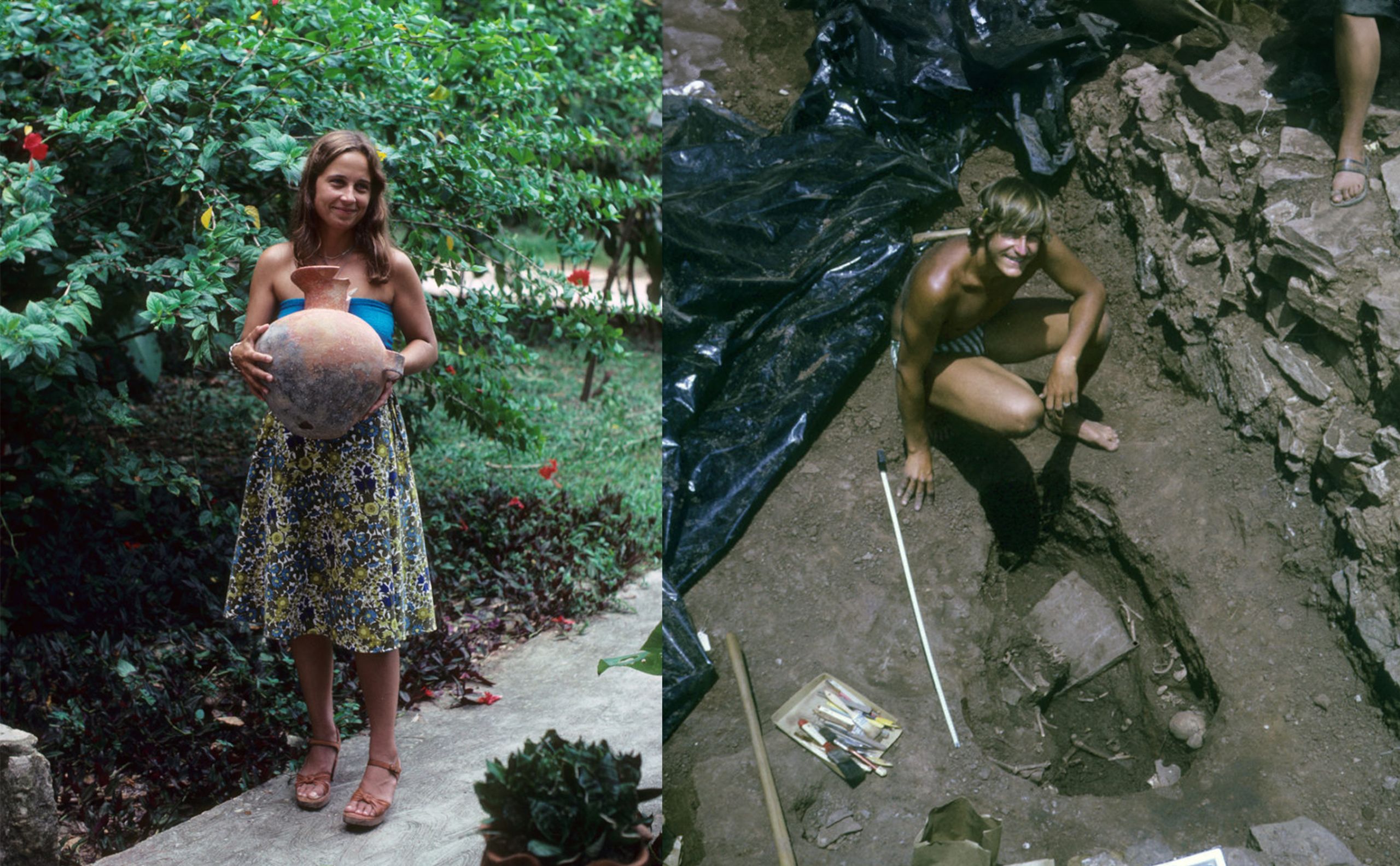

(Above) In true archaeological fashion, the Chases cut their wedding cake with a machete. (Below) Drs. Arlen and Diane Chase on UH campus.
(Above) In true archaeological fashion, the Chases cut their wedding cake with a machete. (Below) Drs. Arlen and Diane Chase on UH campus.
In 1971 Arlen Chase had been on campus at the University of Pennsylvania for one full day as a freshman when he saw Diane Zaino driving up to campus with her parents. To be sure, he saw her coming, but he could not foresee or imagine what they both had coming together for the next 50-plus years.
They would both obtain doctorates in anthropology with specialties in archaeology, marry in 1975 and have three successful children, one of whom, Adrian, works as an archaeologist alongside them. They would prosper as professors of archaeology, and Diane would eventually become senior vice president for academic affairs and provost at the University of Houston.
Through it all, they never missed an excavation season in Caracol since obtaining their permit to carry out archaeology there in 1985 from the Belize Institute of Archaeology, with whom they collaborate on an ongoing basis. Besides digging in the ground, they first explored the area on foot with machetes, then with tools like transits and tape measures, while walking and mapping by hand, side by side, before introducing modern LiDAR (light detection and ranging) technology to the Maya region to reveal 3D maps of surfaces.
Though they have been asked many times about the practicality of working and living together, Diane always has the same answer.
“He’s my best friend as well as my husband,” Diane said. “He’s my co-principal investigator; he’s all of those things. We’re just a really good team.”
In archaeological parlance, they still dig each other.
In true archeological fashion, the Chases cut their wedding cake with a machete.
In true archeological fashion, the Chases cut their wedding cake with a machete.
Drs. Arlen and Diane Chase
Drs. Arlen and Diane Chase
In 1971 Arlen Chase had been on campus at the University of Pennsylvania for one full day as a freshman when he saw Diane Zaino driving up to campus with her parents. To be sure, he saw her coming, but he could not foresee or imagine what they both had coming together for the next 50-plus years.
They would both obtain doctorates in anthropology with specialties in archaeology, marry in 1975 and have three successful children, one of whom, Adrian, works as an archaeologist alongside them. They would prosper as professors of archaeology, and Diane would eventually become senior vice president for academic affairs and provost at the University of Houston.
Through it all, they never missed an excavation season in Caracol since obtaining their permit to carry out archaeology there in 1985 from the Belize Institute of Archaeology, with whom they collaborate on an ongoing basis. Besides digging in the ground, they first explored the area on foot with machetes, then with tools like transits and tape measures, while walking and mapping by hand, side by side, before introducing modern LiDAR (light detection and ranging) technology to the Maya region to reveal 3D maps of surfaces.
Though they have been asked many times about the practicality of working and living together, Diane always has the same answer.
“He’s my best friend as well as my husband,” Diane said. “He’s my co-principal investigator; he’s all of those things. We’re just a really good team.”
In archaeological parlance, they still dig each other.
Next, the science
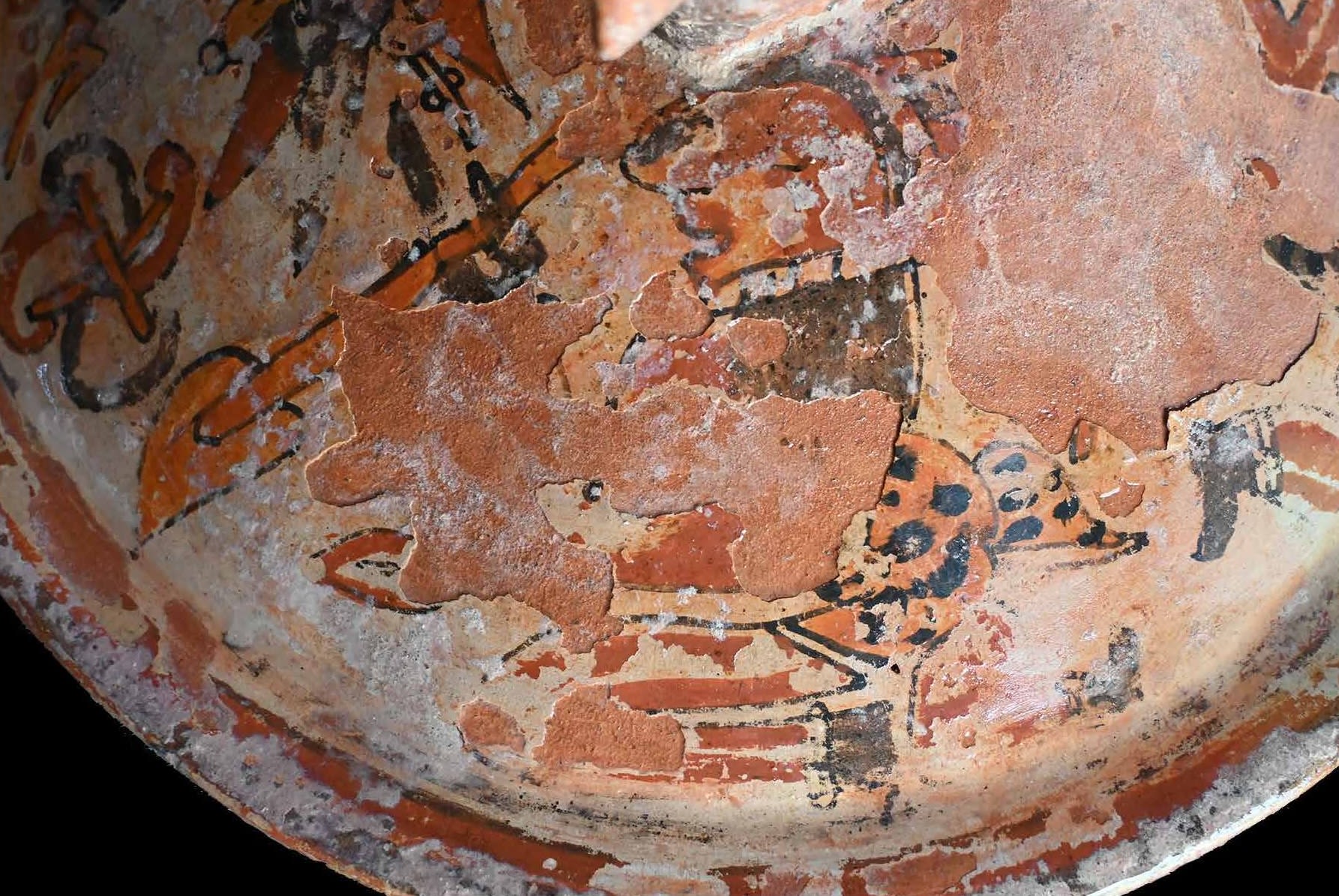

Excavation map of Caracol Structure B34. The blue image, C117H, is where the tomb is located.
Excavation map of Caracol Structure B34. The blue image, C117H, is where the tomb is located.
In 2025 the Chases and their archaeological team would find one of the most spectacular things they had ever encountered — the 1700-year-old burial tomb of Te K’ab Chaak, the first ruler of Caracol and the founder of its royal dynasty.
The discovery is the first identifiable ruler’s tomb found in over four decades of work in Caracol, the largest Maya archaeological site in Belize and in the Maya lowlands.
Te K’ab Chaak, who acceded to the throne in 331 AD, was interred at the base of a royal family shrine along with eleven pottery vessels, carved bone tubes, jadeite jewelry, a mosaic jadeite mask, Pacific spondylus shells and other perishable materials.
“It is one of our most important finds,” said Diane. “We found the first person in the dynasty so that, in itself, in terms of the history of Caracol is huge, and it’s incredible that we could identify him as a ruler. We’ve found numerous tombs with really impressive artifacts inside that were clearly members of the royal family, but this is the first one where it matches with hieroglyphic records to be a ruler and beyond that, the first dynastic ruler.”
“I was just amazed when I saw it,” said Arlen, who is a professor of anthropology and chair of Comparative Culture Studies at UH. It was Arlen who first peered into the tomb and saw the red cinnabar on the walls, the large cross-shape niche carved into the back wall, and the elaborate vessels and jewelry that were buried with the ruler.
Those vessels tell a story about Te K’ab Chaak that does not paint the rosiest pictures of his leadership.
“This guy is a one-percenter and that’s why he has so many vessels and three sets of jade ear flares in that chamber,” said Arlen. “The Early Classic period is the time when the rulers assert the fact that they oversee everything, completely distant from the rest of the population. That changes at the end of the Early Classic period, especially in Caracol, when, after the successful warfare against Tikal, they start to share the wealth with the general population. But not this person.”
The tomb also gives the Chases evidence of how to rewrite the relationship between Caracol and its Central American neighbor Teotihuacán, a city previously thought to dominate the Maya region beginning in 378 AD.
But this tomb is dated to 350 AD, 28 years before that arrival.
“Everyone thought Teotihuacán was so important because there was nothing else like it at that time in Mesoamerica, so the assumption had been that Teotihuacán dominated everything, including the Maya,” said Arlen. “This discovery says they didn’t dominate everything. They were simply another political player of that time.”
It was, in fact, the Maya at Caracol who defeated the powerful city of Tikal, Guatemala in warfare in 562 AD — recorded on a Caracol carved stone altar that was found in 1986. This event pointed to Caracol’s importance in the Late Classic period and debunked the existing myth of Tikal’s invincibility and dominance.
The Chases’ archaeological finds indicate that the ancient Maya were travelers and interconnected with other parts of Mesoamerica. People moved back and forth between Caracol and Teotihuacan. Today a trip by car between these two sites would take over 23 hours. The one-way walking time is estimated to be approximately 153 days, yet plenty of evidence exists linking the two locations.
A pottery blackware ceramic vessel modeled in the form of an owl. The pottery vessels found in the tomb — including lidded basal flange bowls and an owl-shaped animal head bowl — matched the Early Classic period the Chases were investigating, enabling researchers to date the tomb to around 350 AD.
A pottery blackware ceramic vessel modeled in the form of an owl. The pottery vessels found in the tomb — including lidded basal flange bowls and an owl-shaped animal head bowl — matched the Early Classic period the Chases were investigating, enabling researchers to date the tomb to around 350 AD.
Maya pottery basal flange bowl with a coatimundi head as a handle for the lid. The basal flange bowl contains a scene showing two bound prisoners. The coatimundi lid is eroded in the front, but contains a portrait of the Maya god of trade, Ek Chuah, on its rear.
Maya pottery basal flange bowl with a coatimundi head as a handle for the lid. The basal flange bowl contains a scene showing two bound prisoners. The coatimundi lid is eroded in the front, but contains a portrait of the Maya god of trade, Ek Chuah, on its rear.
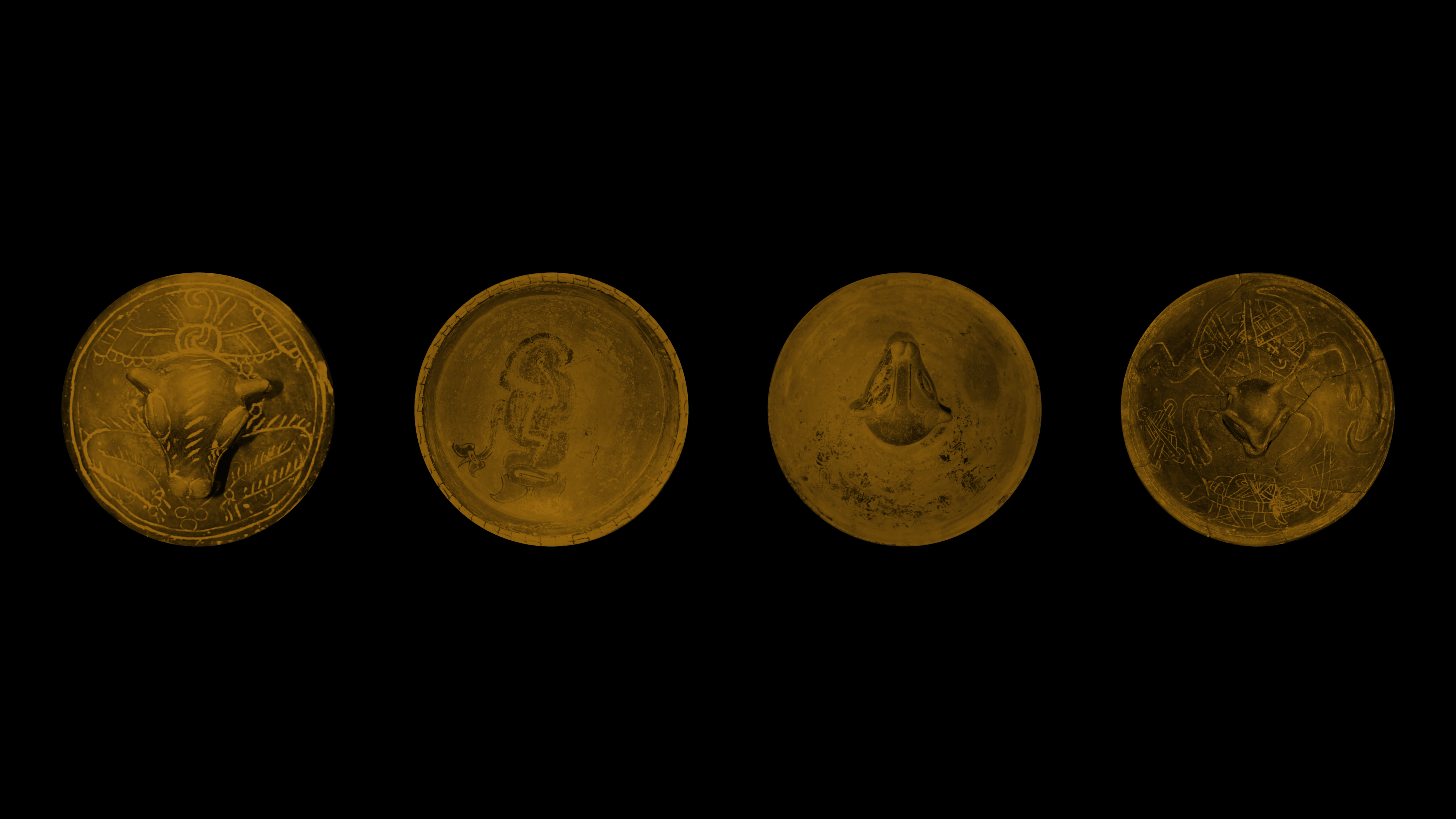
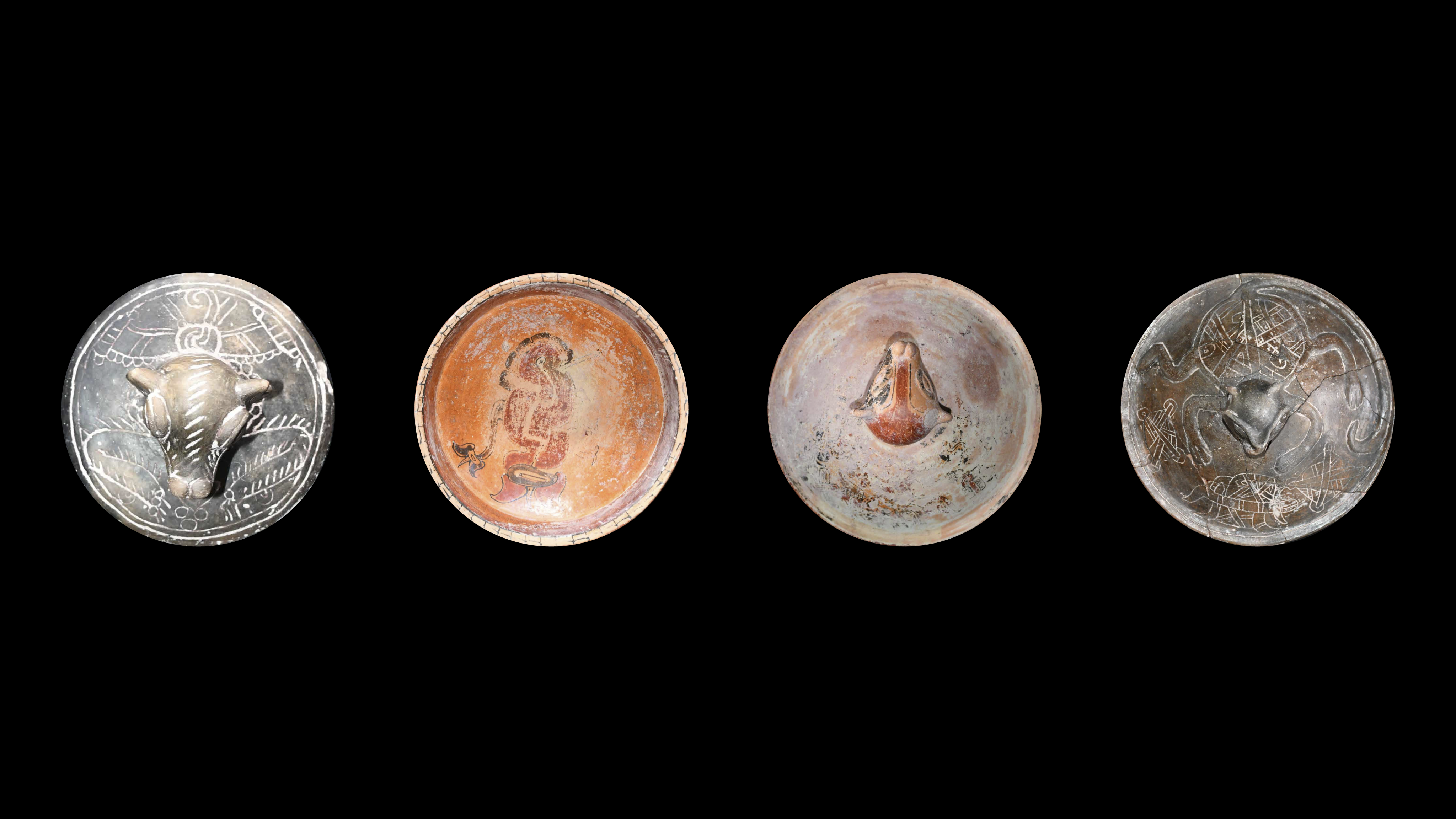
Maya history rewritten by the Chases
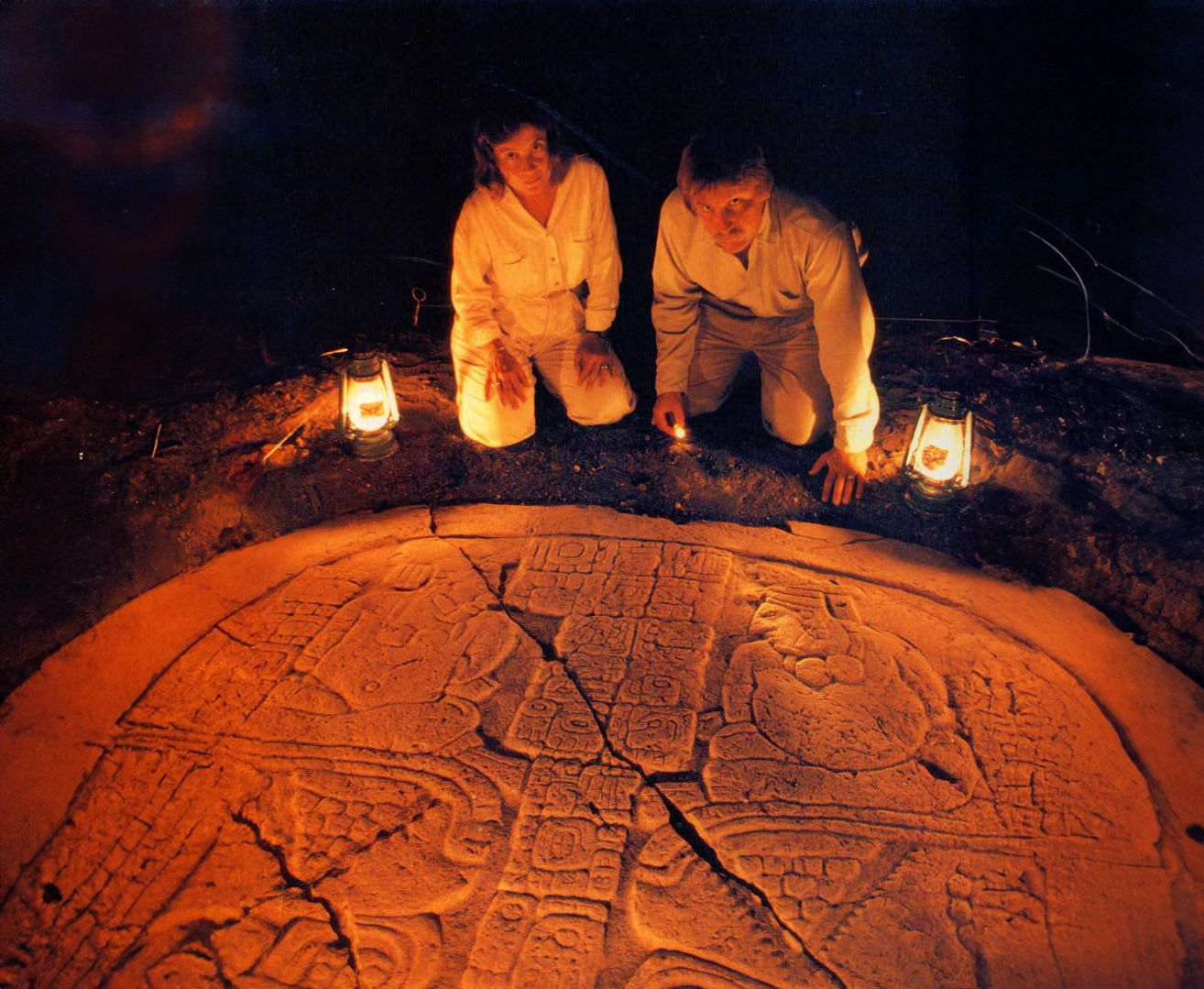

Diane Chase exploring a tomb (2009)
Diane Chase exploring a tomb (2009)
Since their first dig in 1985, the Chases have become known for:
- Providing a nuanced picture of Caracol’s ancient landscape and people, including recognition of Caracol as a city of advanced urban planning, road systems and markets and a large non-elite population upending the notion of a strict Maya social hierarchy. In 1986 they discovered an inscription that told of Caracol’s military victory over Tikal in 562 AD, overturning the myth that Tikal was the most powerful Classic Period city and illustrating that Caracol was a major military and political power.
- Using airborne LiDAR technology to uncover structures hidden for centuries under dense jungle, revolutionizing how archaeologists explore Maya sites. Their pre-lidar work from the 1980s-2000s with UH’s National Center for Airborn Laser Mapping revealed a web of interconnected roadways, proving that Caracol was a massive, urban and integrated city.
- Overturning outdated beliefs about the Maya, while providing new insights. Their archaeological work has shown that ancient Maya society was composed of many different social gradients, contrary to simpler two-class models. From the 1980s - 2000, they and their team mapped numerous causeways (or roads) and thousands of agricultural terraces spread out across Caracol as well as hundreds of reservoirs in non-elite areas, proving that water, sacred to the Maya, was not controlled by the elite, as previously thought. The Chases’ son, Adrian, found that Caracol had a decentralized water system and that residential groups had their own access. He is currently studying the urban structure of Caracol and changes in governance over time.
It takes time to uncover time
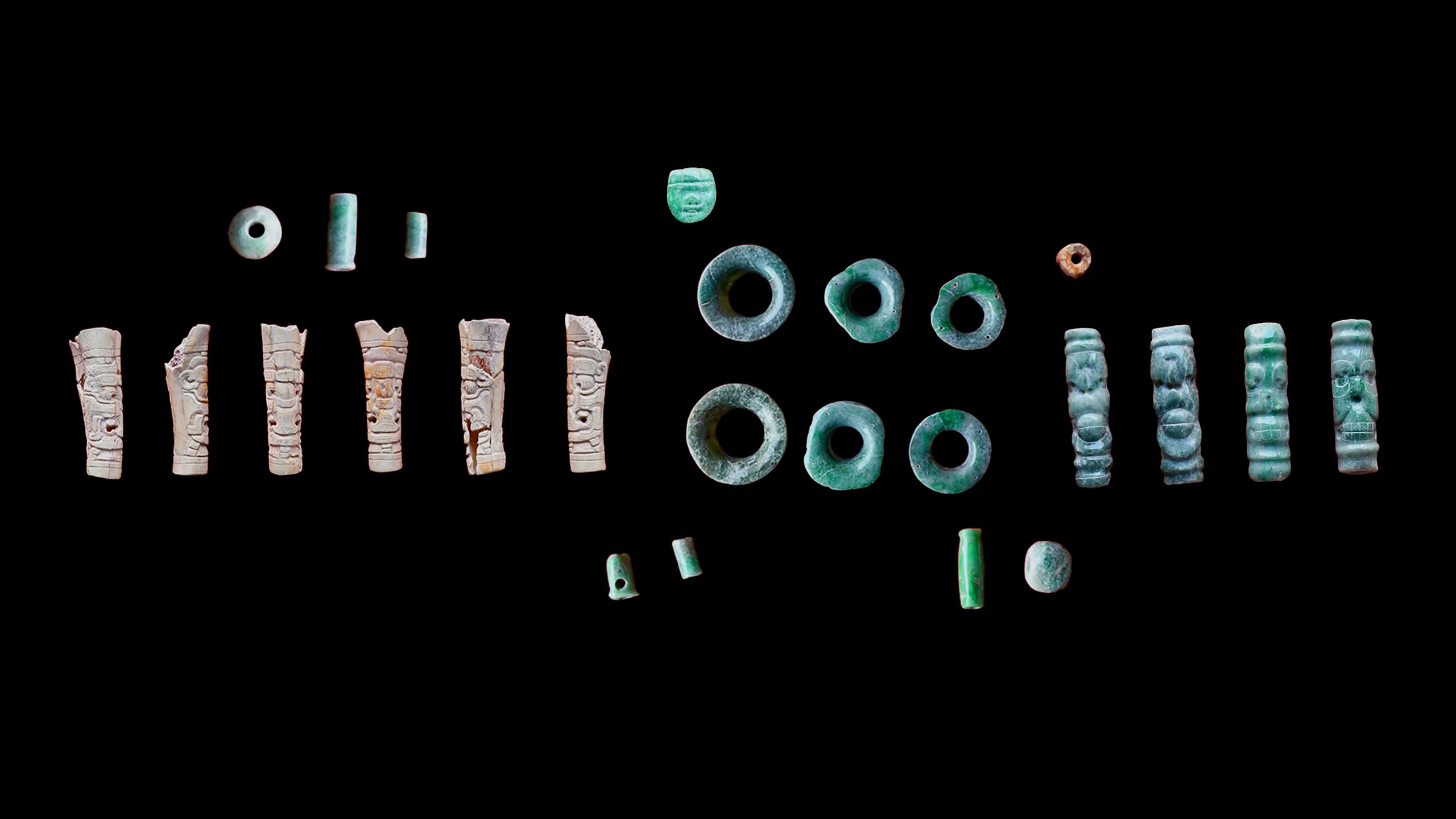

Caracol Northeast Acropolis plaza: Special Deposit (S.D.) C117F-1
Caracol Northeast Acropolis plaza: Special Deposit (S.D.) C117F-1
Caana, the central architectural complex at Caracol, Belize, rising 43.5 m above ground level. Founder’s tomb was found under the canopy in an acropolis to the immediate right of Caana.
Caana, the central architectural complex at Caracol, Belize, rising 43.5 m above ground level. Founder’s tomb was found under the canopy in an acropolis to the immediate right of Caana.
Detail of one of the polychrome captive found on four basal flange bowls in the tomb.
Detail of one of the polychrome captive found on four basal flange bowls in the tomb.
Maya pottery
Maya pottery
Single individual skull, probably male, no teeth, resorbed mandible, height ca. 5’7” based on femur
Single individual skull, probably male, no teeth, resorbed mandible, height ca. 5’7” based on femur
Diane Z. Chase in the tomb of Te K’ab Chaak with vessels in the foreground and jadeite mask to the left and the south wall niche.
Diane Z. Chase in the tomb of Te K’ab Chaak with vessels in the foreground and jadeite mask to the left and the south wall niche.
A basal flange-lidded bowl and lid recovered from the Caracol founder’s tomb. The lid usesa modeled macaw bird head as a handle. This unique vessel exemplifies the artistry and symbolic richness of Classic Maya ceramics, oOering clues to royal identity, status and ritual practices.
A basal flange-lidded bowl and lid recovered from the Caracol founder’s tomb. The lid usesa modeled macaw bird head as a handle. This unique vessel exemplifies the artistry and symbolic richness of Classic Maya ceramics, oOering clues to royal identity, status and ritual practices.
Four jadeite tubular beads showing live and dead spider monkeys.
Four jadeite tubular beads showing live and dead spider monkeys.
For over 40 years the Chases have been the lead scientific researchers at the city of Caracol, but they note that they could not have made these discoveries without extensive support from a variety of sources.
The Belize Institute of Archaeology provides permits to the site and collaborates on the long-term research focus. The Government of Belize has secured funds to consolidate the ancient structures and, most recently, to construct a paved road to the site to allow greater access for tourists and local Belizean visitors. The various institutions at which they have worked, like UH, have been understanding about the need to work remotely from the jungle. Numerous institutions and individuals have provided financial support for the investigations, among them the Alphawood Foundation of Chicago. Their children tolerated annual treks to the jungle, and project members, staff and students from the U.S. and Belize make the day-to-day discoveries possible.
As the Chases often note, there is no “I” in archaeology. It takes a team, time and patience.
“One of the reasons we’re able to make as many contributions as we have is that we stayed put at one site for a long period of time and we just kept asking questions,” said Diane. “We asked, can we see the impact of warfare? So, we developed an archaeological research design to see the archaeological impact of successful warfare. We asked, were there different diets among people at the site? There were. We just continued to ask new research questions over all of those years. The results help build the picture.”
“If we’d worked at Caracol for five or ten years, we would have had part of the story and only part. If we’d stopped at 20, it still would have only been part. I think the point is that there are many more years of exploration and many more years of discovery,” she said.
Unlike the ruler whose tomb they uncovered, long may they reign.
Arlen and Diane Chase on the cover of Florida magazine in 1990.
Arlen and Diane Chase on the cover of Florida magazine in 1990.
Watch the Video:


